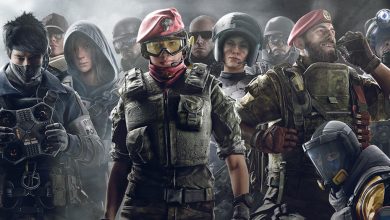![]() US-based Qualcomm Inc recently announced a gaming solution for ‘The Next Billion’ – the Zeebo. Targetted primarily at developing countries such as India, China, Russia, and Brazil, the Zeebo aims to succeed where other consoles have failed by enforcing anti-piracy measures and maintaining competitive prices. While they are very optimistic in their planning, anyone with a fair understanding of the Indian gaming market will tell you that their strategy just won’t work, and here’s why:
US-based Qualcomm Inc recently announced a gaming solution for ‘The Next Billion’ – the Zeebo. Targetted primarily at developing countries such as India, China, Russia, and Brazil, the Zeebo aims to succeed where other consoles have failed by enforcing anti-piracy measures and maintaining competitive prices. While they are very optimistic in their planning, anyone with a fair understanding of the Indian gaming market will tell you that their strategy just won’t work, and here’s why:
[singlepic id=796 float=center]
Pricing
While the Zeebo claims to be competitively priced, the equivalent of $199 in Brazil and $174 in other territories ($1 = Rs 50) is not only not competitive, but it’s fairly expensive for what the console offers. That ($174) translates to close to Rs 9,000. Compare it to India’s largest selling and still very popular console, the PlayStation 2, which is priced at Rs 6,490 ($125), and it’s easy to see that the Zeebo won’t be making much of a dent in the Indian market, which is heavily influenced by prices.
Software pricing, while lower than PS2 prices, still doesn’t seem competitive enough. While Zeebo games will cost anywhere from $5-10 (Rs 250-500), most PS2 games cost between Rs 499 and Rs 699 ($10-14). The advantage with PS2 games is that once you purchase a game, it’s yours for life, whereas on the Zeebo it’s only yours while it’s stored on your Zeebo’s 1GB flash memory. If you delete it to make room for something else, you’ll have to buy it again to get it back.
[singlepic id=798 float=center]
Content
Now, obviously you wouldn’t expect the Zeebo to boast a wealth of content at launch itself, but considering that it’s going to be competing with the PlayStation 2, it has a huge uphill task ahead of itself. Even after 8 years, the PS2’s catalogue is still steadily growing and more back-catalogue games are being released here all the time. To add to that, India now manufactures its own PS2 games, so prices are at a constant decline. Most of the content coming to the Zeebo, at least for now, is ported from other platforms like the PS2, PSP, Xbox, Wii, and PC, so there seems to be very little original content for the Zeebo and there’s no telling how these ports will perform.
Digital distribution
It just doesn’t work here. In India, buyers are most comfortable exchanging cash over a store counter. Online shopping has failed to pick up in India, and even the well-educated are wary of buying products and content over the big bad internet. The same will probably hold true for game purchases for the Zeebo, which uses the wireless 3G network. It’s going to be very hard for a retailer to explain to a working class parent why his store has the console for sale, but no games on store shelves to go with it. Another drawback is also, as I mentioned earlier, the fact that you only own the game as long as it resides on your Zeebo’s storage drive. And even if the digital distribution model does find takers, the biggest roadblock here is that 3G networks aren’t even available in India yet, so there’s a lot of uncertainty where that’s concerned.
[singlepic id=797 float=center]
Piracy
The Indian mentality is to get things as cheap as possible. Even with original PS2 games available at Rs 499, many people would explore the option of buying a pirated copy for Rs 50 or less. A common question a potential PS2 buyer, or any other console for that matter, would pose to a retailer is ‘Will it play cheap pirated games?’. Whether or not they actually go ahead down the piracy route is another matter, but people like to know that there is that option. That option is there with the PS2, and not with the Zeebo. So for the Zeebo, when the answer from the retailer comes back as an abrupt ‘No’, it will turn customers away, not because they only want to play pirated games, but because they would like to have the freedom to choose.
Brand
All consoles in India are commonly referred to as ‘play stations’, such is the strength of Sony’s brand here. In comparison, the Zeebo is an unknown quantity. Even the Xbox 360, which came to India with a huge marketing push, soon lost its way, and is already being outsold by the PS3, which launched here six months later. With the Zeebo targeting the masses rather than gamers, it is going to be very hard for a retailer to sell a console that costs significantly more than the mighty PlayStation 2 with a game catalogue that is only a fraction of the size of its competitor. And with Sony upping the ante with localised content, the Zeebo may just find itself in a tough spot.
[singlepic id=794 float=center]
Regardless of how the Zeebo does here, it’s no doubt nice to see a console manufacturer looking at India as one of its primary markets. If only they had looked at the Indian gaming market a little more closely, they would realise that the factors that they are banking on the most to move units – price and anti-piracy (through digital distribution) – will actually turn out to be their product’s biggest drawbacks.
Join the discussion at the IndianVideoGamer Community forums



